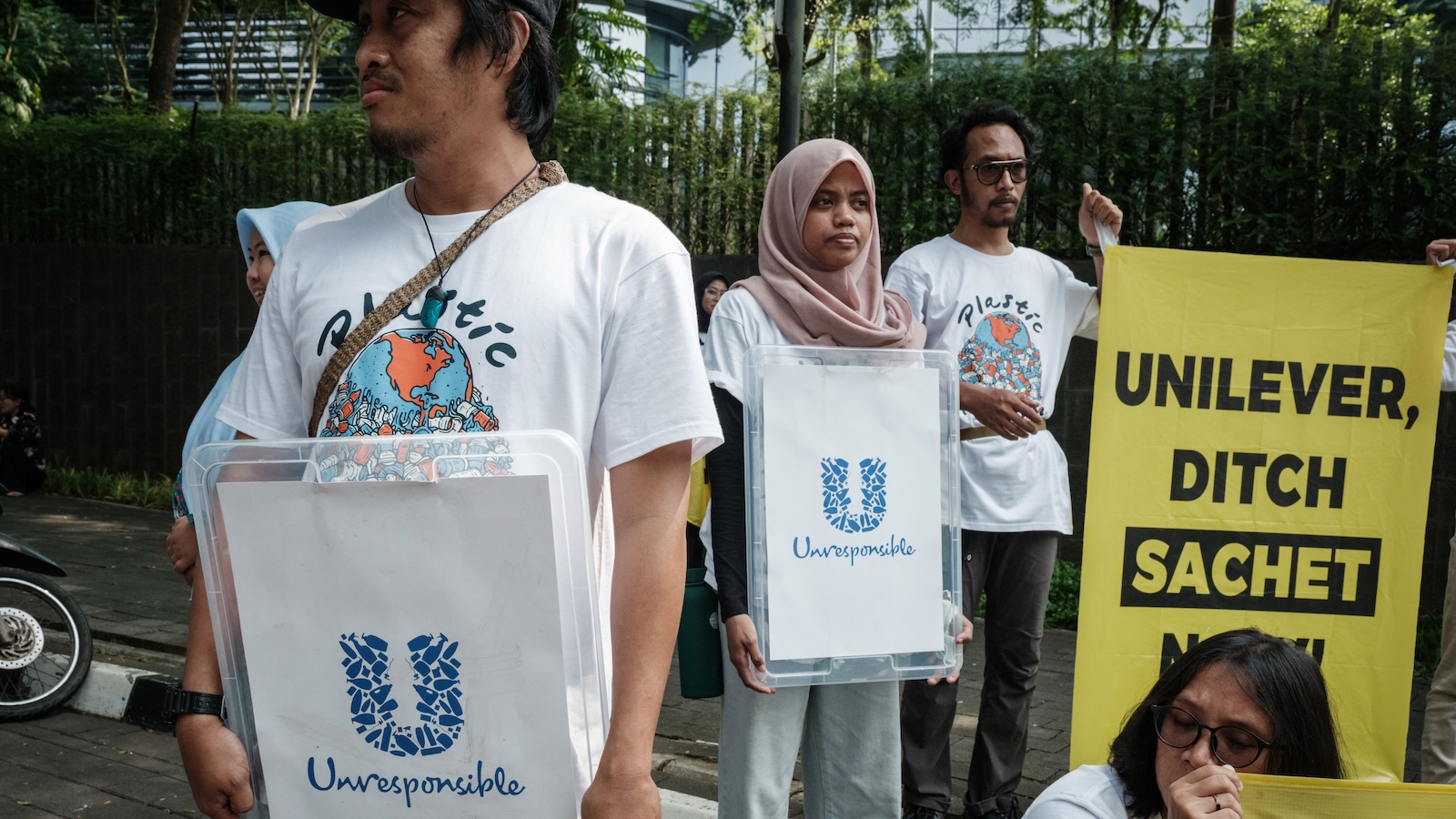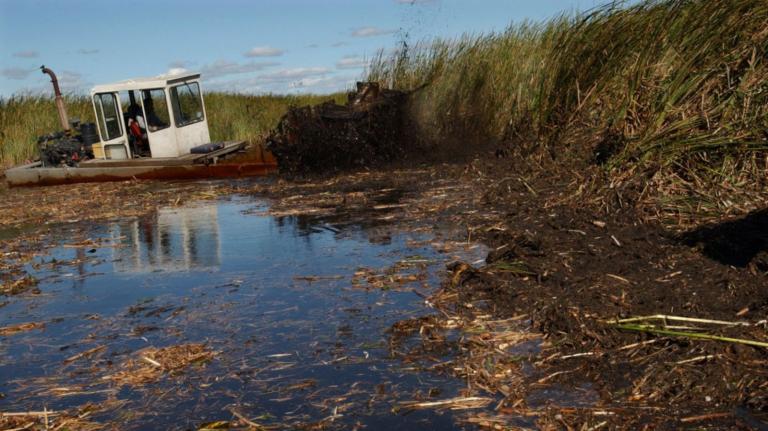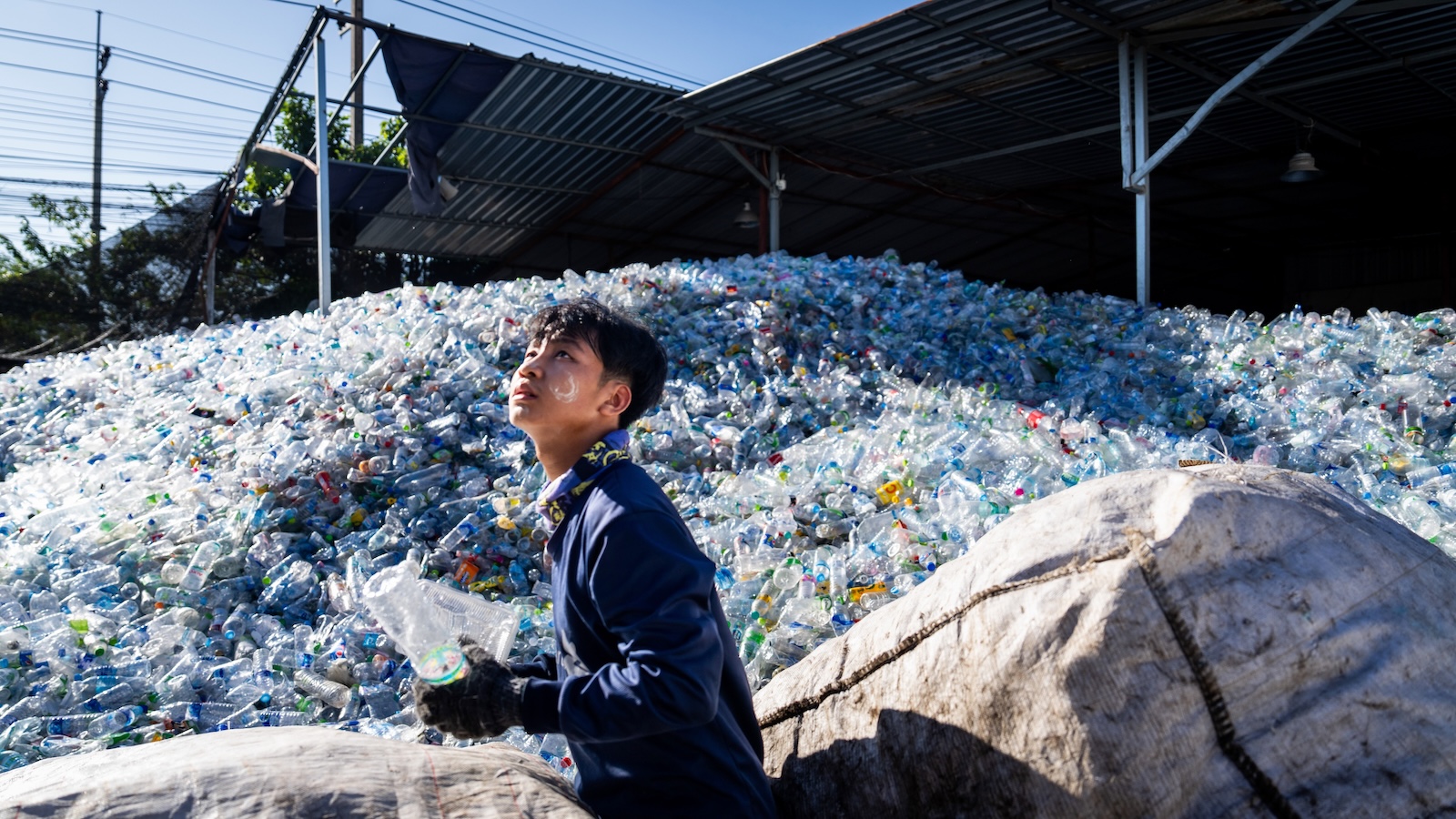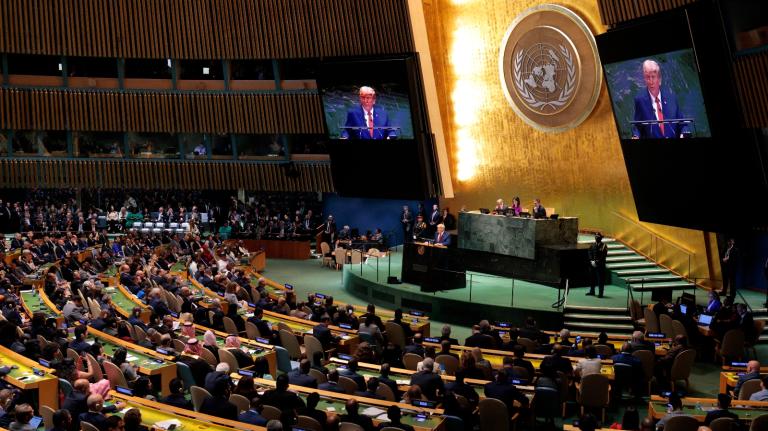If all goes according to plan, by the end of the year, some 170 countries will finalize the world’s first legally binding treaty to curtail plastic pollution. Its success will depend in no small part on money: creating a funding pipeline so that signatories, especially in the Global South, can execute the promises they agree to.
For the moment, the specifics of this financing remain bound up in diplomatic haggling. Still, countries broadly agree that billions of dollars are a necessary, if modest, starting point; modeling studies have pegged the need anywhere between $3 trillion and $17 trillion. Disagreements center on how to raise it, who should administer it, and what to spend it on.
But these differences are unlikely to sink a treaty whose urgency has never been more apparent to national leaders. Each year some 20 million metric tons of plastic, roughly the mass of 200 aircraft carriers, enter the environment. Microscopic shreds of the stuff are increasingly found not just in nature’s remotest reaches, including Mount Everest and the Mariana Trench, but throughout the human body, with unknown consequences. And with production of this petrochemical-derived material set to skyrocket – possibly tripling by 2060 — plastic pollution and climate action are increasingly considered joined at the hip.
Whatever form the treaty takes, it’s likely to prioritize one popular line item: expanding waste management, like trash systems and recycling, in the Global South. A good place to start addressing the problem, the thinking goes, is to get it out of nature and into landfills and recycling plants. Worldwide, 2.7 billion people live without regular refuse collection. As garbage volumes surge across the developing world, growing quantities of degrading plastic litter filter into rivers, lakes, and oceans.
This has put the spotlight on waste management as a low-tech, politically palatable way to curtail plastic pollution. The Organisation for Economic Co-operation and Development, or OECD, which represents 38 industrial countries, says a comprehensive package of measures — tackling plastic’s whole lifespan, from production to disposal — could eliminate 95 percent of the pollution by 2040. Such steps include taxing plastic, banning some single-use items, and redesigning goods so they don’t have to be thrown in the trash. But it also called a $2.1 trillion expansion of old-fashioned waste infrastructure, like landfills, recycling plants, and the logistics systems that supply them, a “crucial prerequisite.” To meet the goals, it estimated, the world must recycle about 40 percent of its plastic. Today it recycles about 9 percent.
A key target is Southeast Asia, where roughly a third of all marine plastic originates. There are several reasons for this. Rising living standards have boosted consumption of consumer goods, like soft drinks and takeout meals, packaged in single-use plastic. Europe, Japan, and the U.S. continue to offload hundreds of millions of tons of plastic waste to the region each year, not all of it legally. With many population centers near coastlines and waterways, any mismanaged waste gets a free ride to the sea.
The governments of the Association of Southeast Asian Nations, or ASEAN, have not invested nearly enough to fix this, mostly because they cannot afford to. Landfills, garbage trucks and recycling systems cost a lot, but aren’t very profitable. For cash-strapped governments facing multiple crises – pandemics, climate disasters, poverty – building even basic waste infrastructure can quickly fall by the wayside. Many of the 670 million people who live in the association’s member states have no one to take their trash.

“So what do you do when it’s not collected?” said Umesh Madhavan, research director at The Circulate Initiative, a nonprofit focused on ocean plastic pollution and the circular economy. “You dump it or dig a pit and bury it. Or you try and burn it.”
That is a common outcome for much of the refuse in Southeast Asia, where by one estimate, only about a third of waste gets any form of management — like landfills, recycling plants or incinerators. The number is closer to 100 percent in the U.S. and other wealthy nations.
For that reason, research suggests, basic waste management can bring outsize benefits. Last year a study by data scientists at the University of California at Santa Barbara identified five relatively simple and straightforward actions that could go a long way towards eliminating 89 percent of mismanaged plastic globally; improving trash and recycling systems were among them. In the OECD’s most ambitious scenario — which envisions a 95 percent reduction in plastic leakage by 2040 — these types of measures deliver three-quarters of the drop.
“Downstream” solutions — that is, addressing plastic at the end of its life — will find supporters in Southeast Asia, where the governments of Malaysia and the Philippines have joined domestic petrochemical and manufacturing interests to promote “waste-to-energy” and “co-processing” plants as solutions to clear backlogged waste. These operations, which burn plastic to generate electricity or produce cement, are common in rich countries. But ASEAN environmentalists call them “false solutions” that release noxious and planet-warming pollutants while failing to tackle the root issues of the plastic crisis.
Some scientists and environmentalists in the developing world say a treaty centered on waste management is bound to fail. They say experience shows no number of landfills or recycling plants can contend with the volume of plastic they’re seeing.
“Nobody is talking about the production side of things. We’re just talking about how we can deal with the waste,” said Hema Mahadevan, a public engagement campaigner for Greenpeace Malaysia. “If you really want to cut down on plastic waste, then you should really start from the top. Go to the source of the problem.”
Jorge Emmanuel, a Filipino chemical engineer and former technical advisor for the United Nations Development Program, said the Philippines’ waste systems are broken in ways infrastructure can’t fix. A 2023 study found it has the world’s highest per capita rate of plastic released to the ocean, at about 7 pounds a year. Emmanuel said the country has tough laws supporting recycling and prohibiting illegal dumps, but officials don’t enforce them. That’s why he and others are urging treaty writers to invert how they think about waste: Focus on reducing the amount of plastic in the system, with waste management as a last resort.
“I’m in public health, and we say prevention is better than cure,” he said. “If you put money into preventing the problem, you’ll spend less to take care of the problem afterward.”
He and others with extensive firsthand experience with the region’s plastic pollution have a few suggestions for those crafting the treaty. The first is to direct money and supportive policies toward entrepreneurial solutions.
Southeast Asia, for instance, has in recent years seen a blossoming of projects and small-scale enterprises that hint at what a low-plastic economy might look like. On the Vietnamese resort island of Phu Quoc, a startup called Greenjoy has persuaded local businesses to replace 1 million plastic straws with those made of lepironia, a local grass.
An initiative in the Philippines has equipped 1200 sari-sari stores, the local equivalent of bodegas or corner stores, to dispense liquid detergent, dishwashing soap, and fabric conditioner in bulk to customers who bring their own containers. The products are made by local manufacturers rather than global corporations, and they’re cheaper. The project directors claim this has replaced thousands of thin plastic packages called sachets that are virtually impossible to recycle.

But such efforts have struggled to scale, often for lack of money. Businesses tackling plastic pollution often fall into a “missing middle” where they’re too big to receive microfinance, venture or philanthropic funding, but too risky for bank loans, said Madhavan. He and others said this financing gap could be plugged with funding from the plastic treaty, or by cash from corporations that need to comply with regulations.
New financing tools could help. In January the World Bank launched an experimental bond that will raise $14 million to help community-recycling projects in Indonesia and Ghana expand. The more plastic these projects collect, the more money the bond’s investors will make.
But novel financial methods can bring novel problems. The World Bank-funded projects will make money in part by selling plastic credits, a relatively young instrument of questioned effectiveness. They work something like carbon credits. A local project gathers plastic litter, disposes it properly, and a government, corporation, or other entity that wants credit for that cleanup pays the project for what it collected. Advocates say this can offer a quick injection of capital into developing countries with overwhelmed waste systems. Verra, the world’s biggest issuer of carbon credits, and companies like it are urging plastic-treaty negotiators to help this new tool scale up.
Environmentalists blast this idea, saying the credits are too easy to game for projects of dubious environmental value, like co-processing. Even if such credits incentivize local junk cleanups, they argue, they’re not enough to remake a system that pours so much plastic on developing countries in the first place.
A global plastic fund also could mobilize the world’s largest recycling workforce. Most of the world’s plastic recycling is not done by municipalities or corporations, but people who salvage things from the trash as a livelihood. There are some 20 million waste pickers in the world, mostly in the Global South; together their efforts account for 60 percent of the plastic recycled on Earth.
Indumathi, a woman in Bengaluru, India, began waste picking about two decades ago after falling into medical debt. She started out going street to street, but as the years passed she wondered how to make this low-margin business safer and more profitable for herself. She saved enough money to open her own scrap shop. She helped convince the city to give waste pickers identification cards to avoid harassment by cops and passersby.
Today she leads a recycling business with 88 employees and 10 collection trucks. Her ardent advocacy has secured contracts from the local government to collect recyclables in several neighborhoods. She suggested money from the plastic treaty could provide workers with more protective equipment, better working conditions, and opportunities for career advancement like she had.
“What has happened to my life is just transition,” Indumathi said through a translator provided by Hasiru Dala, a social impact organization that advocates for waste pickers. “I want the same for all waste pickers everywhere.”
Finally, any funding effort could go into building the hidden infrastructure that makes treaties work. For example, Emmanuel said, many developing countries will not have the resources to write their own action plans on plastic — nationally defined strategies on how to tackle the problem, as with treaties on climate and biodiversity — and should get funding and technical support for them.
Or if the treaty ends up requiring countries to ban plastics that contain chemicals linked to cancer, but doesn’t specify further, “developing countries would need technical and financial support to create or strengthen their scientific infrastructure to make determinations of what is cancer-causing,” Emmanuel said in an email. That could come as equipment or training for Philippine scientists, for example.
Money doesn’t buy everything, of course. Erin Simon, vice president and head of plastic waste and business at the World Wildlife Fund, said plastic-reduction pilots around the world have fizzled out because there was no policy to support them. She wants to see a treaty that includes a range of pro-transition measures — like banning some single-use plastics and making corporations financially responsible for the fate of their packaging — that will give innovators more of a fighting chance.
“You have tons of levers, but the challenge lies in pulling all the levers together,” she said. “Therein lies the hope of the treaty.”




